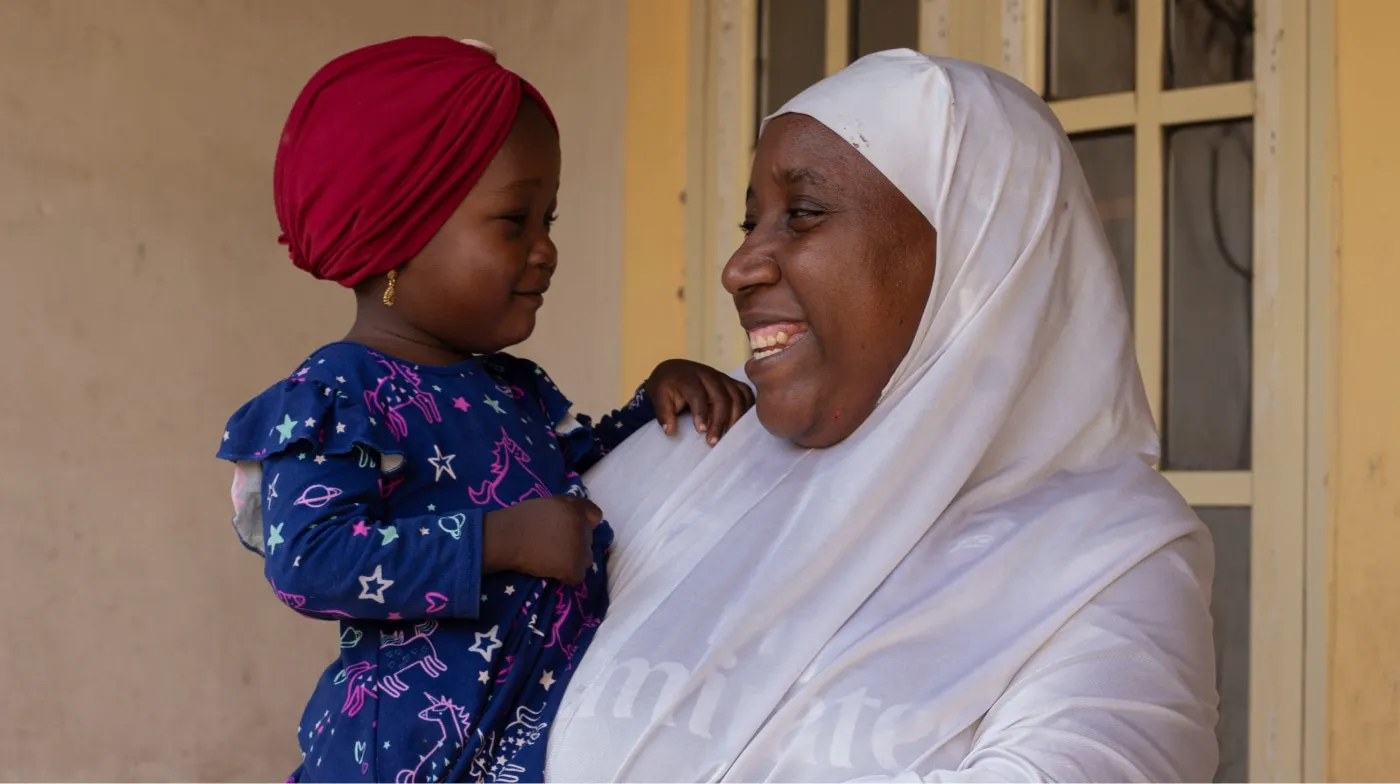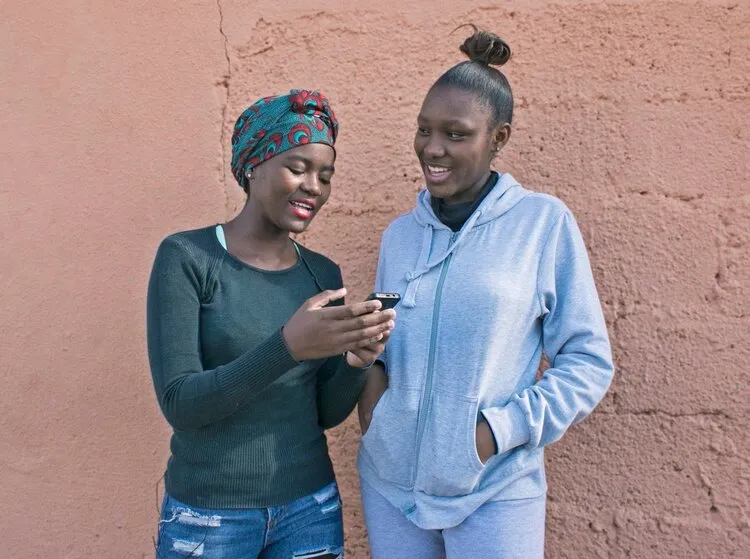
Helping ensure all voters get their voices heard at the ballot box with Vote.org’s WhatsApp chat service


Vote.org uses technology to simplify political engagement and increase voter turnout. In 2020, Vote.org built a chat service to engage voters, especially Spanish-speakers, on WhatsApp and provide access to the information and tools they needed to exercise their right to vote, with a focus on the 2020 Presidential Elections. This service continues to help Vote.org focus on underserved voters in America, giving voters the information that they need to vote in any statewide or federal election.
Impact in numbers
11M+
650K
200M
Vote.org uses technology to simplify political engagement and increase voter turnout. In 2020, Vote.org built a chat service to engage voters, especially Spanish-speakers, on WhatsApp and provide access to the information and tools they needed to exercise their right to vote, with a focus on the 2020 Presidential Elections. This service continues to help Vote.org focus on underserved voters in America, giving voters the information that they need to vote in any statewide or federal election.
“Vote.org is ready to ensure that all voters are able to make their voices heard at the ballot box in 2024 with our focus on underserved voters: young voters, voters of color, and voters with disabilities. We will continue to invest in partnerships that uplift critical, nonpartisan election information as well as proactively reaching out to voters with the timely information they need.”
Alex Meadow, Sr. Director of Partnerships, Vote.org
Numbers: a 2022 midterm election snapshot
- More than 11 million users visited Vote.org’s website to register to vote, verify their registration, request absentee ballots, find their polling location or to receive trusted, accessible information about voting and the laws that affect voting in states around the country.
- Of the 11 million visitors to Vote.org, at least 1.16 million of those users were under the age of 35.
- Vote.org helped to register more than 650,000 voters.
- Vote.org engaged voters more than 200 million times, via texts, emails, radio impressions and more.
- Vote.org sent 31 million texts with crucial election information to voters across the country.
- For the 2022 Georgia runoff election, Vote.org reached voters more than 4.2 million times, reached nearly 340,000 students with a campus influencer programme, an SMS programme and through grassroots teams across 29 campuses. The organization reached voters over 18.2 million times in Georgia in the general election and the runoff combined, and made 7.8 million radio impressions on voters in Georgia.
Using tech to reach individuals with trusted information …
Vote.org is driven by a belief that technology, when wielded strategically for good, can drastically expand access. Voting is no different - in fact, at least in the United States, voting systems are antiquated and different from state to state, so there is a lot of room for technology and innovation.Vote.org is also driven by a belief that participation is essential to a healthy and thriving democracy - and that most Americans want to participate in their democracy, but are left out because they lack the trust, information and time to do so. The organization believes that when voters have accurate information surrounding the voting process, they are able to make their voices heard in every election.
…. in a complex and often changing context
Unlike many other countries, the U.S. has a decentralized elections system, so each state is responsible for administering its own state and federal elections, in accordance with the constitution and with limited federal interference. For this reason, systems, dates, deadlines, processes, and rules differ from state to state. This makes national electoral organizing complicated. Throughout the country’s history, some states have made a point of making voting easier for their citizens, and some have imposed barriers. This context makes Vote.org’s offering as a centralized hub for voter information across all 50 states and Washington, D.C. a most valuable service.

Countering threats to democracy with tech
Today, voter suppression looks different than it did in the 20th century or the 19th century. In the 19th century, women, Native American and Black citizens were barred from voting by law. In the 20th century, when voting rights were expanded to all races and genders, these historically marginalized groups still faced state and local barriers to the ballot box via Jim Crow Laws in the American South. With the passage of the Voting Rights Act of 1965, opponents of expanding the franchise turned to even more camouflaged means of suppression.
Today, voter suppression looks like polling places closing and long lines at the polls, heavily concentrated in communities of color. Today, voter suppression looks like not allowing people to vote by mail during a global pandemic. After a record voter turnout in 2020, Vote.org saw state legislatures across the country pass voting restrictions to voting in 2021. At least 19 states passed 34 laws restricting access to voting.
“Unfortunately, the current threat to democracy cannot be overstated,” says Alex Meadow. “Anytime you have 19 states—or even one state—passing laws to make it harder to vote; make it less likely that eligible votes will be counted; and make it more likely that valid election results can be overturned, then every aspect of the democratic process faces a clear and present danger. The threat will be even worse if voters become complacent to these changes. Once we tolerate these changes and fail to push back on them, they will become endemic to the electoral system and will become much harder to overturn. However, there are indeed glimmers of hope! There are 24 states that passed laws in 2021 making it easier to vote through voting reforms like automatic voter registration and universal vote-by-mail. By electing pro-democracy representatives, people still do truly have the power when it comes to safeguarding our democracy.”
First-of-its-kind bilingual voter resource tool
During America’s 2020 election cycle, Vote.org identified its biggest challenge as reaching individuals with trusted information. In particular this meant reaching young people and people of color who were new or historically excluded from electoral processes. The challenge was greatly exacerbated by COVID-19 when life stresses were magnified - and also at a time when there was an unprecedented rise in mis-and-disinformation, particularly about the election, alongside an increased need for vote by mail and the changing environment across states.
Working with WhatsApp and Turn.io, in 2020 Vote.org launched a first-of-its-kind bilingual voter resource tool focused on engaging voters on the WhatsApp platform. As a growing part of the American electorate, Vote.org needed to find new and innovative ways to serve Spanish-speaking voters. The organization knew that WhatsApp was a great way to do this. Based on research, the organization estimated that around half of the US Hispanic/Latino population was using WhatsApp at least monthly in 2020. The platform’s US Hispanic/Latino user base of 32 million was growing because of its data cost savings, messaging encryption capabilities and popularity in Latin American countries.
Building a chat service enabled Vote.org to bring its trusted and nonpartisan voter information and resources to meet Hispanic/Latino users where they were. In 2020, through the service, over 148,000 messages were sent to over 31,000 unique users. Vote.org worked closely with the WhatsApp and Turn teams over the course of several months to map out and build the exact flow and user experience of interacting with Vote.org information, tools, and resources on the platform, including translating the entire chat platform experience into Spanish.
Seamless integration of Vote.org’s tools
The interactive service allows users to seamlessly access Vote.org’s tools, check election information for their state, find answers to commonly asked questions around voter registration, rules and deadlines, and get critical information about their right to vote. An important feature of the WhatsApp experience is that users click out to Vote.org to use the latter’s tools: there is no in-app integration of the tools themselves. No voter information is gathered or provided directly on the platform. Instead the service refers voters over to Vote.org to actually complete the tool workflows.
Evolving the chatbot beyond 2020 and towards 2024
Vote.org’s mantra is that there are no off-election years. The organization’s chatbot content is focused on giving voters the information that they need to vote in any federal or statewide election. Moving beyond 2020 and towards 2024, however, has seen some evolutions:
- In the period after the 2020 Presidential Election, Vote.org revamped some of its chat cards to focus on more evergreen content so that the bot could serve upcoming elections seamlessly, without having to change too much annually. These changes were made in English and Spanish.
- Vote.org’s engineering team took the time between the 2020 cycle and the 2022 midterms to engage in deep analysis of the types of questions that the bot received that were not suited to a menu style chatbot. Importantly, this has programmatic implications beyond the chatbot, helping Vote.org formulate proactive messaging addressing common voter questions.
A strong focus on user acquisition and the role of multi-faceted public campaigns to drive traffic
- In 2021, the organization ran a digital A/B test ad to see what it could learn about attracting new users to the chatbot and optimizing conversion rates.
- This was against a background of lower usage on the Vote.org chatbot in 2021 - 2022 than 2020. Some of this is due to general and predictable dropoff in a midterm cycle compared to a Presidential election. However, the Power is in Your Hands campaign featuring Walter Mercado was a major driver of traffic to the chatbot in 2020, and without a major campaign, there was less enthusiasm on the chatbot than in 2020.
Lessons on using a WhatsApp-based chatbot for organizations working in civic participation
“We know that technology, when wielded strategically for good, can drastically expand access. While accuracy and clarity should be the primary focus of everything you do related to a chatbot, remember that users (in our case voters) are the experts on what they need! We were surprised at some of the questions we received and were enthusiastic to meet voters where they were through the development and refinement of the chatbot. Turn.io makes it very easy to modify your chatbot to meet user needs."
Alex Meadow, Vote.org
Turn.io product features used:
- BigQuery for data analytics
- List / structured messages




